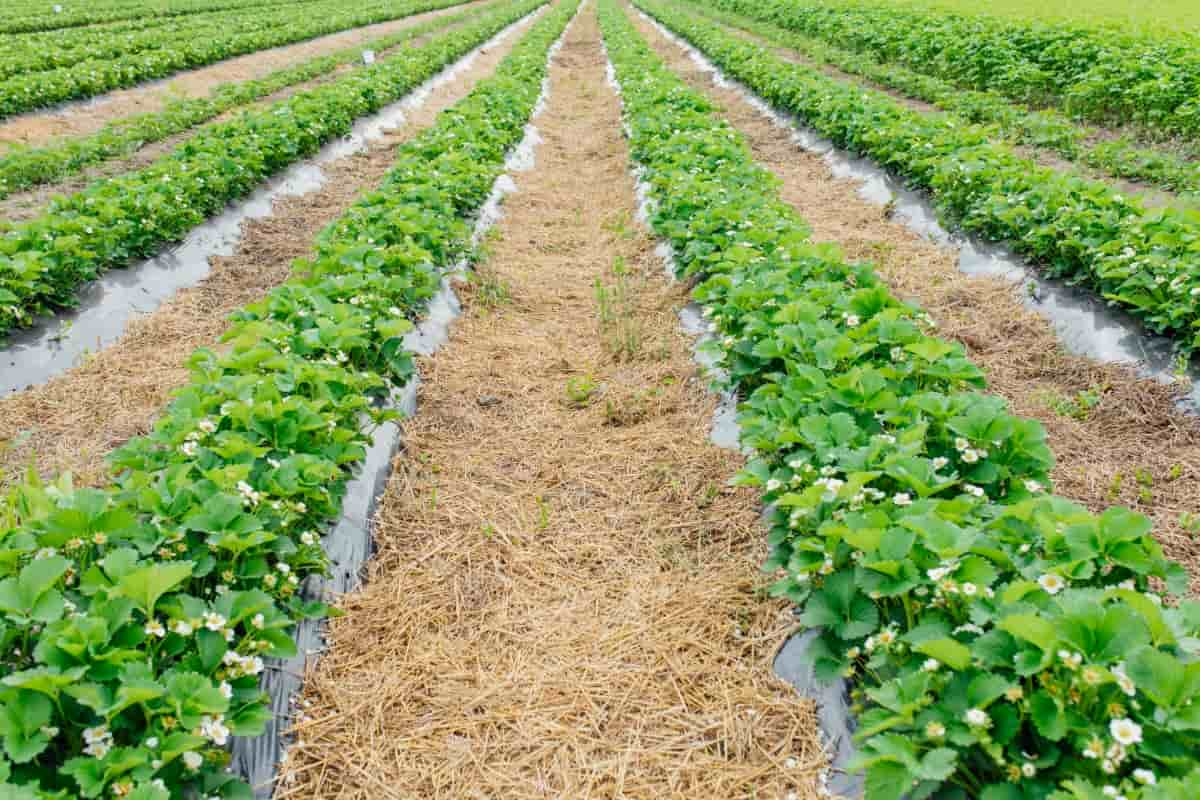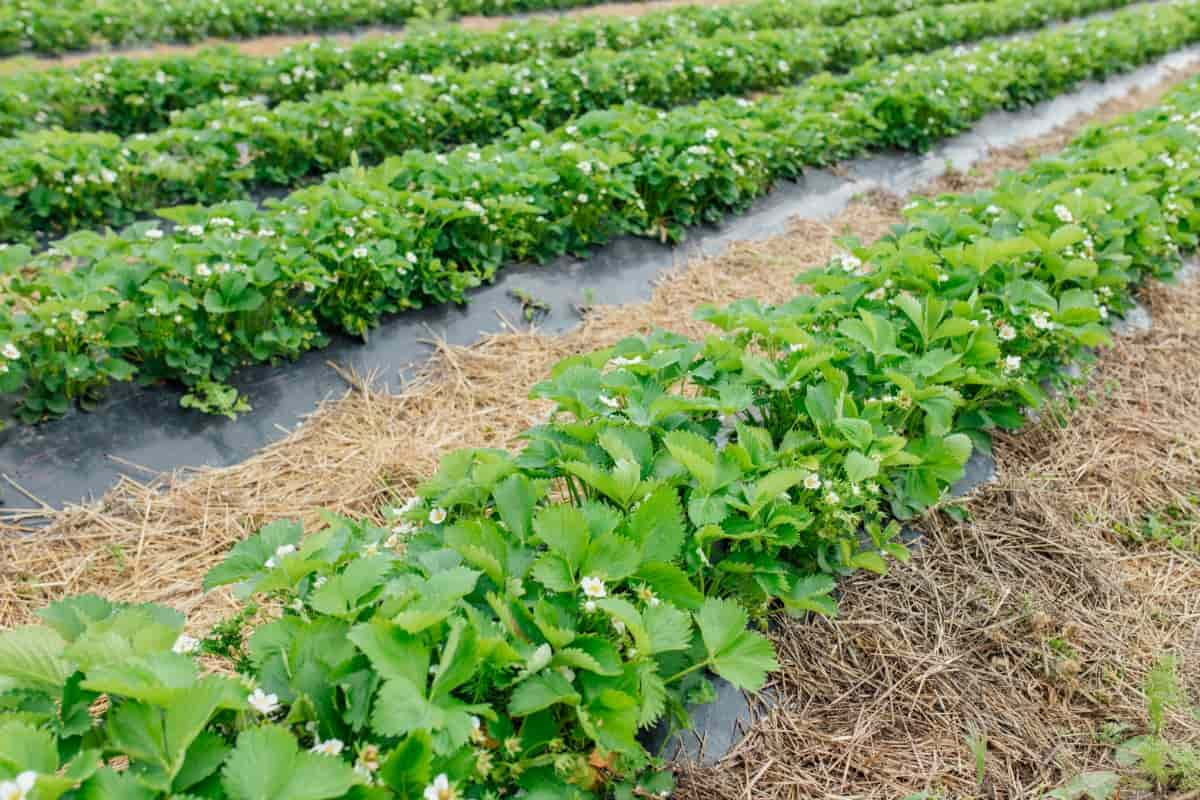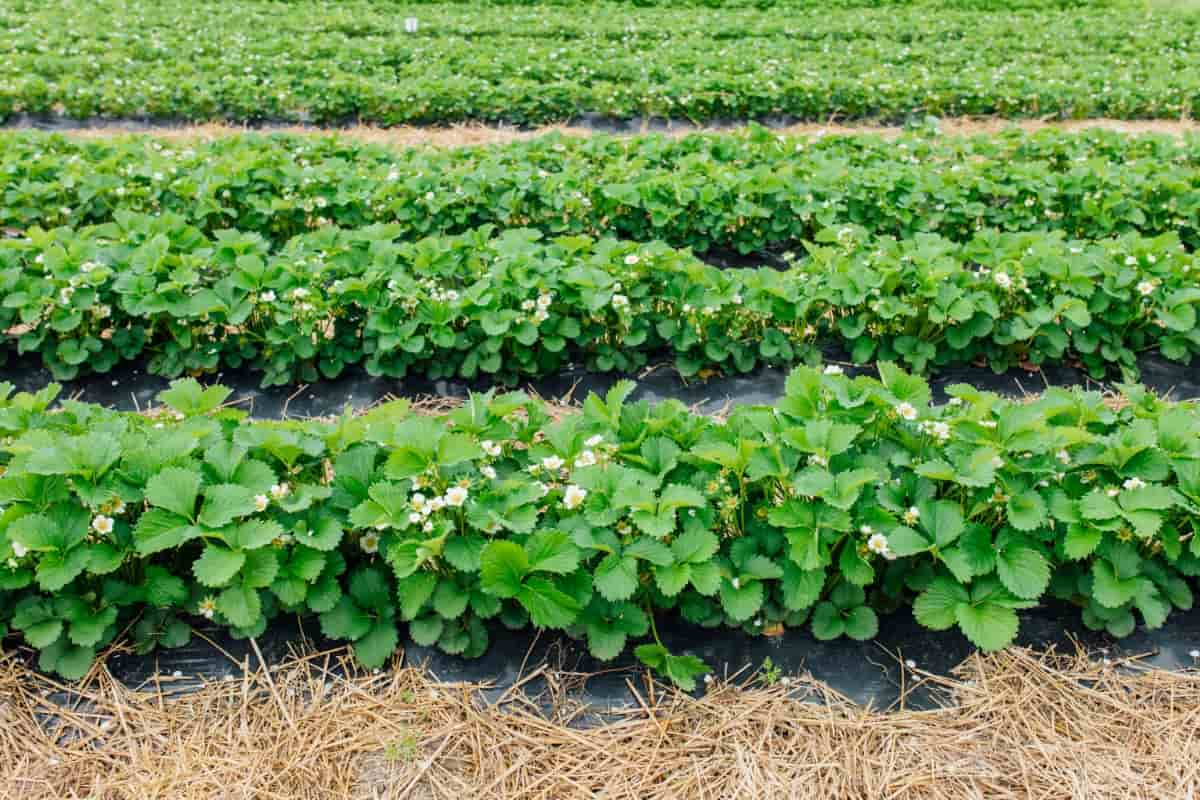Mulching with straw is a fantastic option that provides many benefits for your plants and soil health. Mulching your vegetable garden with straw offers many benefits that can help improve the plant’s health and productivity. Straw mulch provides insulation for your plants’ roots, protecting them from extreme temperature fluctuations. It helps keep the soil cooler in hot weather and warmer during colder periods, providing optimal conditions for plant growth.

How to Mulch Vegetable Garden with Straw
Benefits
Mulching with straw benefits vegetable gardens, providing numerous advantages to help your plants thrive. The benefit of using straw as mulch is its ability to retain soil moisture. This helps to prevent evaporation and keeps the roots of your vegetables consistently hydrated.
Additionally, straw mulch acts as an insulator, regulating soil temperature by keeping it cool during summer days and warm during colder nights. Straw mulch also helps to suppress weed growth by blocking sunlight from reaching weed seeds. This saves time weeding and reduces nutrient competition between weeds and vegetable plants.
Preparing for Straw Mulching
Properly preparing the area is essential before mulching your vegetable garden with straw. This will ensure that your plants receive maximum benefits from the mulch and grow healthy and strong. Clear any existing weeds or debris from the garden bed. You don’t want anything competing with your vegetables for nutrients and water. Pull out any weeds by hand or use a hoe to loosen them up before removing them.
Moist soil will help retain moisture in the root zone of your plants, which is essential for their growth and development. Ensure about two inches of space between each plant and its surrounding mulched area. After applying straw mulch in the vegetable garden, gently press it down around each plant base without compacting it too much. This helps anchor it in place and prevent wind erosion.
Right Type of Straw for Mulching
Wheat straw – It provides good weed suppression and moisture retention, making it suitable for most vegetable gardens. Another option is barley straw, which breaks down more slowly than wheat straw and can last longer than mulch.
Oat straw or rye straw – These grains are often grown as cover crops, and their leftover plant material can be used as mulch. They offer similar benefits to wheat or barley straw but with the added advantage of being environmentally friendly. Selecting the right type of straw for mulching vegetable gardens requires considering factors such as availability, sustainability, and potential chemical treatments.
Applying Straw Mulch
Firstly, make sure your garden beds are clean and free from debris. Remove any weeds or grass that may be present. Next, spread a layer of straw evenly around your vegetable plants. Aim for a thickness of about 2-3 inches. Be careful not to pile the straw too high against the stems of your plants, as this can promote rotting.
Once you’ve applied the mulch, gently water it to help settle it. This will also provide moisture to your plants’ underlying soil and roots. Avoid compacting or packing down the straw too tightly when applying it. You want air circulation between the layers of straw so that moisture can still penetrate the soil.
Maintaining the Straw Mulch
Once you have applied straw mulch to your vegetable garden, it’s essential to maintain it properly throughout the growing season. Regularly check the depth of your straw mulch. Over time, wind or rain may cause it to shift or thin out in certain areas. To maintain its effectiveness, add more straws as needed. Aim for a thickness of about 2-3 inches for optimal results.
In case you missed it: Ultimate Guide to Using Straw As Garden Mulch for an Optimistic Organic Future

Watering Techniques for a Straw-Mulched Vegetable Garden
Watering your vegetable garden is essential, especially when you have applied straw mulch. A drip irrigation or soaker hose is best when watering a straw-mulched vegetable garden. To determine when and how much water to use, check the soil moisture regularly by sticking your finger about an inch into the ground near your plants. If it feels dry at this depth, it’s time to water. Aim for deep watering sessions that moisten the top 6-8 inches of soil.
Controlling Weeds
The thick layer of straw acts as a barrier, preventing sunlight from inhibiting their germination. To effectively control weeds in your straw-mulched vegetable garden, it’s essential to take proactive measures. Regularly inspect your garden beds and manually remove any emerging weeds before they have a chance to establish themselves. It’s essential to tackle these intruders early on before they compete for nutrients and water with your valuable vegetable plants. Remember that maintaining a healthy and robust vegetable garden also significantly keeps pesky weeds at bay.
Preventing Pests and Diseases
The main benefit of mulching your vegetable garden with straw is that it acts as a natural barrier against pests and diseases. The thick layer of straw helps deter unwanted critters from reaching your plants, creating a less favorable environment for common garden pests.
To maximize pest and disease prevention in your straw-mulched vegetable garden, it’s essential to maintain good hygiene practices. Additionally, practicing crop rotation each year can help disrupt pest life cycles and reduce the likelihood of recurring problems. Removing any diseased plant material promptly will also help prevent the spread of diseases within your garden.
Harvesting and Cleaning Vegetables
When harvesting vegetables in a straw-mulched garden, timing is key. You want to wait before picking the fruits or vegetables that are fully ripe. This ensures you get the best flavor and nutritional value from your harvest. Handling the harvested vegetables carefully is essential to prevent contamination from the straw mulch. Once you have harvested and cleaned your vegetables, it’s time to enjoy the fruits of your labor.
In case you missed it: Mulch for Indoor Plants: Benefits and Disadvantages

Renewing and Removing Straw Mulch at the End of the Season
To start, carefully rake away any remaining straw mulch that hasn’t broken down completely. This will help expose the soil beneath and allow it to breathe. Remove any weeds that may have sprouted during the growing season. Next, add compost or other organic matter to enrich the soil further.
Once you’ve refreshed the soil, you can decide whether or not to reapply straw mulch for winter protection. If you live in a colder climate, this insulation layer can help prevent frost damage and stabilize moisture levels during harsh weather conditions. If you choose not to reapply straw mulch for winter, store it properly, so it remains clean until next year’s gardening season.
In case you missed it: A Guide to Agriculture Mulching Sheets: Types and Best Practices for Usage

Conclusion
Mulching your vegetable garden with straw can be a game-changer for boosting plant health and yields. Furthermore, applying straw mulch around your vegetable plants creates an ideal environment for beneficial insects such as ladybugs or spiders who feed on harmful pests like aphids or mites. These natural predators help keep pest populations under control without the need for chemical pesticides.
- Feed Your Flock for Less: Top 10 Tips to Save on Chicken Feed
- Ultimate Guide to Ossabaw Island Hog: Breeding, Raising, Diet, and Care
- Hatching Answers: The Top 10 Reasons Your Chickens Aren’t Laying Eggs
- Eggs and Economics: Breaking Down the Cost of Raising Backyard Chickens
- Defend Your Greens: Proven Methods to Keep Iguanas Out of Your Garden
- Ultimate Guide to Cinnamon Queen Chicken: A Comprehensive Guide for Beginners
- Ultimate Guide to California Tan Chicken: Breeding, Raising, Diet, Egg-Production and Care
- Ultimate Guide to Marsh Daisy Chicken: Breeding, Raising, Diet, and Care
- 10 Types of Chicken Farming Businesses You Can Start for Profits